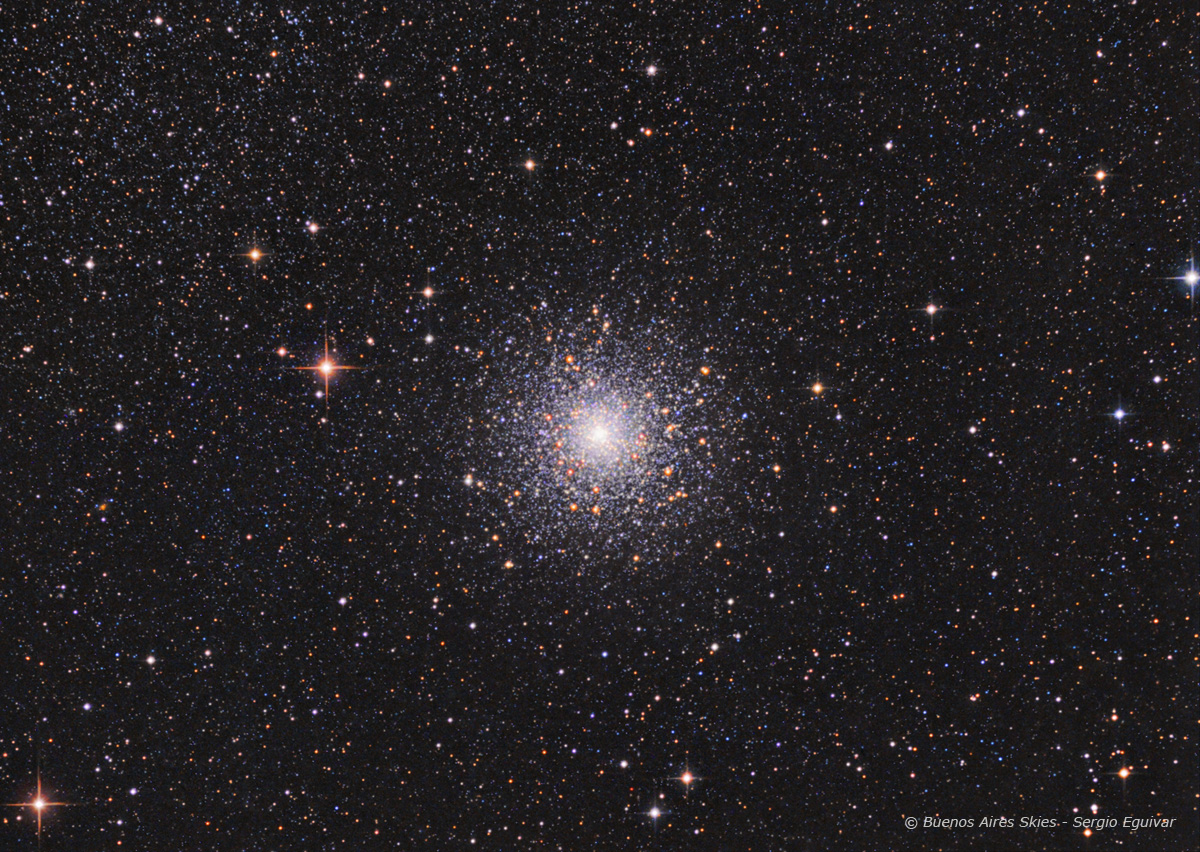
| HOME |
NGC 362
GLOBULAR CLUSTER IN TUCANA
AKA Bennett 7; Caldwell 104
(Image centered at: ra 01:03 / dec - 70:51)
CLICK THE IMAGE FOR A LARGE VIEW
February 2021, Sarandí, Gualeguaychú - Entre Rios, Argentina
DATA
TYPE: Globular Cluster
VISUAL BRIGHTNESS: 6,8
APPARENT SIZE: 14 arc minutes
DISTANCE: 27,700 light years
IMAGE INFORMATION
SCOPE: 8" NEWTONIAN ORION OPTICS UK (Ultra Grade Optics) w/Televue Paracorr working at at f5,75
CAMERA: QSI 583 WS
MOUNT: SKY WATCHER NEQ6
FILTERS: Baader LRGB Set
SKY CONDITIONS: Semi - urban Skies
EXPOSURES: LRGB (60,30,30,30) RGB binned 2x2
OBJECT DESCRIPTION AND IMAGE SESSION
NGC 362 is the “other” brilliant globular cluster in Tucana, located on the north-east border of the Small Magellanic Cloud. It was discovered by James Dunlop on August 1, 1826 and cataloged by him as No. 62 of his catalog.
In the late 1980s, NGC 362 was compared to the otherwise similar globular NGC 288, and it was found that this cluster was about 3 billion years younger. This because of differences in the color-magnitude diagrams: the so-called Horizontal Branch of NGC 362 is redder, and the turnoff point of the main sequence (hottest/bluest/most massive main sequence stars) is bluer (and brighter).
Although both bright (mag 6.6) and large (14 arcmin), NGC 362 is often overlooked because it’s in the same area of sky as its brilliant big cousin, 47 Tucanae, (NGC104). However NGC 362 has a lot of appeal in its own right, as a compact globular cluster easily visible in small scopes. With large apertures the globular is more resolved, revealing many stars tight to the core. (*)
(*) Text originally written by Daniel Verschatse.
This picture is on his memory. Daniel inspired and shown us the beauties of the Southern Skies.